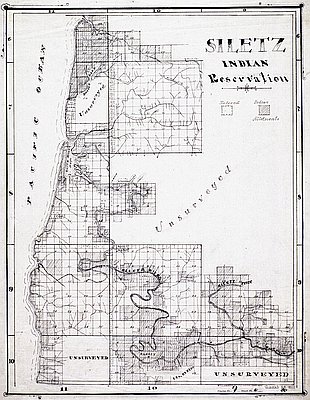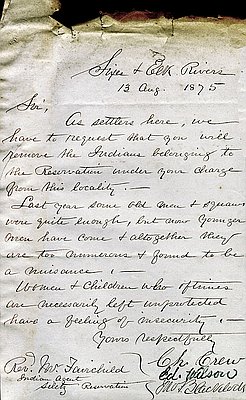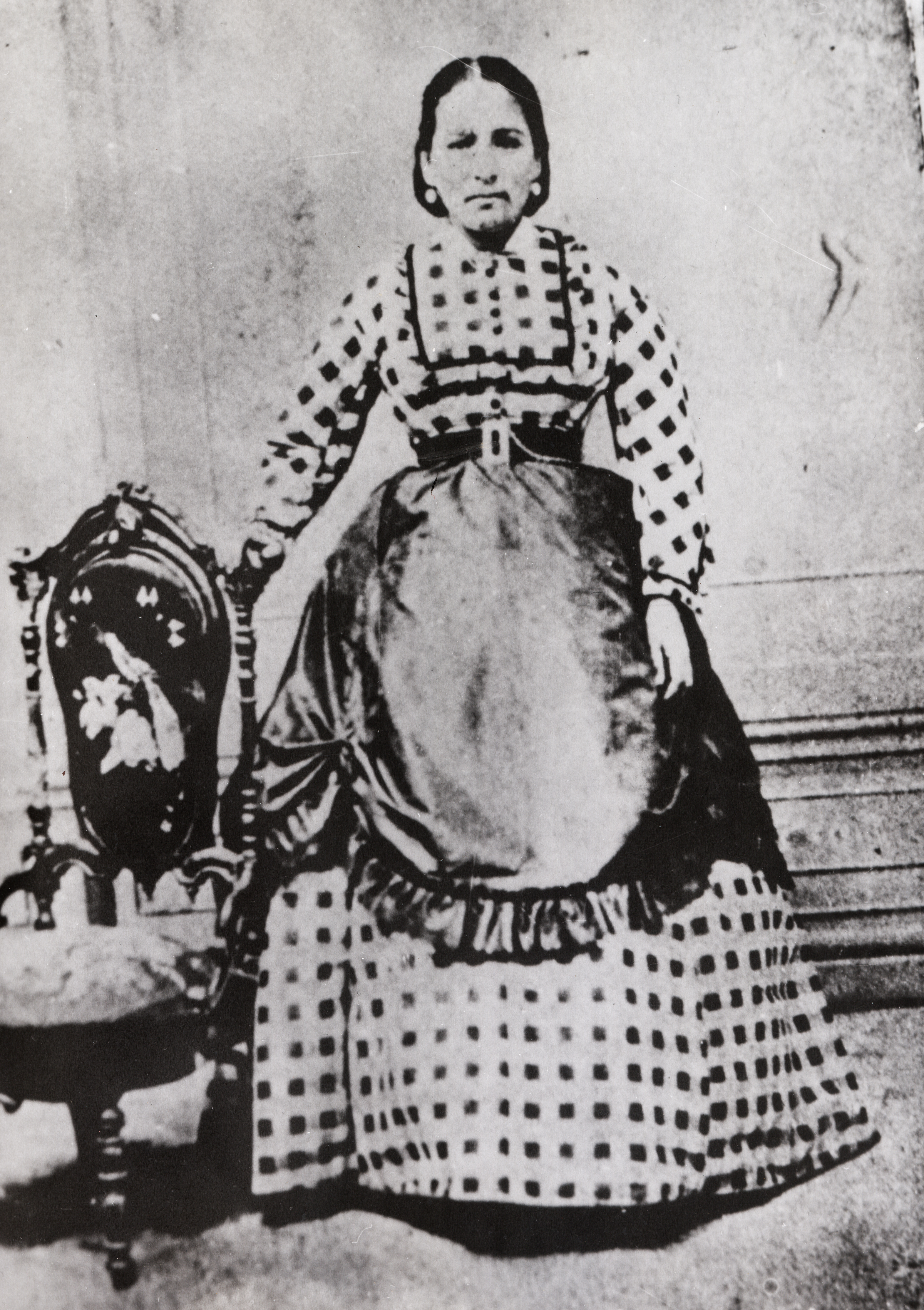- Catalog No. —
- 0341P069
- Date —
- c. 1870
- Era —
- 1792-1845 (Early Exploration, Fur Trade, Missionaries, and Settlement), 1846-1880 (Treaties, Civil War, and Immigration), 1881-1920 (Industrialization and Progressive Reform), 1921-1949 (Great Depression and World War II)
- Themes —
- Government, Law, and Politics, Native Americans, Oregon Trail and Resettlement
- Credits —
- Oregon Historical Society Research Library
- Regions —
- Coast Willamette Basin
- Author —
- Unknown
Quis-quas-hum (Frances Harney Johnson)
The woman in this photograph is identified as Quis-quas-hum, also known as Frances Harney Johnson, a member of a Takelma band in the Rogue River Valley who spoke Penutian. She was likely born in 1833 (accounts vary) and lived until at least 1940. Her father was Chief Shulth-tah-sah (Jack Harney), her mother was Taowhyhee (Margaret Harney), and her brother was Chief Ol-ha-the or Othatha (George Harney). As a young woman in 1856, she walked the Oregon Trail of Tears from the Rogue River Valley to the Coast Reservation. Many of her descendants still live on the Siletz Reservation. According to Charles Wilkinson, an expert in Indian law, she was the primary source of ethnographic information on the Takelma language for anthropologists Edward Sapir and John Harrington.
Her remarkable life story caught the attention of twentieth-century writer Evelyn Sibley Lampman, who was intrigued by Quis-quas-hum’s romantic relationship with Philip Henry Sheridan, the famed Civil War general who served in Oregon Territory from 1855 to 1861. In an article titled “Little Phil of Fort Yamhill,” published in the Oregonian in 1959, she wrote:
“On his arrival at Grand Ronde (1856), he immediately undertook to build himself a house, after which he found a squaw to take care of it for him. Her name was Harriet, and she was a member of the Rogue River tribe, a beautiful girl, and unusually intelligent.”
There is little to admire in Lampman’s account, from her use of the pejorative term for Native women to her condescending tone regarding Harney’s beauty and intelligence. Notably, she gets her name wrong. Lampman’s source is an account recorded by journalist Fred Lockley, who interviewed Martha Gilliam Collins, the daughter of Cornelius Gilliam, an early white settler and a colonel of a volunteer regiment during the Cayuse War. Martha Gilliam describes two Native girls from her childhood—Harriet and Frances—and connects Frances directly to Phil Sheridan by referring to her as “his wife.” Lampman conflated the two girls, and in doing so significantly muddled the historical record. It has yet to be completely untangled.
Quis-quas-hum’s descendants have clarified her biography significantly, however, and you can read accounts of her by Agnes Baker Pilgrim (Takelma and an enrolled member of the Confederated Tribes of Siletz) here.
We know that for at least two years, Frances Harney lived with Phil Sheridan at Fort Yamhill as his companion. By some accounts, their relationship was described as affectionate, and reportedly Sheridan provided for her when he left to fight in the Civil War. There is clear documentation that Harney’s brother, George, visited Sheridan in Washington, D.C.; it is less clear if Frances accompanied him.
The practice of non-Native men having relationships with Native women was common during the period of western expansion across the continent. French-Canadian fur traders called it à façon du pays, ‘in the manner of the country’. American fur trappers called the women “country wives.” In the absence of non-Native women and the legal bureaucracies required to formally marry, trappers, traders, and mountain men made alliances with Native bands by forming domestic partnerships and having children with Native women. Some of those relationships lasted the length of a contracted term with the fur company, for one season; others lasted a lifetime. The system was certainly exploitive in many ways, but it should not surprise that the men and women often became devoted spouses to each other.
The families who first farmed French Prairie were all country marriages, many of which were eventually formalized by Catholic and Methodist missionaries. The children of those marriages were singled out by every version of government in Oregon—beginning with the Provisional Government and including the federal government—as eligible voters and landholders.
Further Reading
Barman, Jean. French Canadians, Furs, and Indigenous Women in the Making of the Pacific Northwest. Vancouver, B.C.: UBC Press, 2015.
Wilkinson, Charles. The People are Dancing Again: The History of the Siletz Tribe of Western Oregon. Seattle, Wash.: UW Press, 2010.
Lampman, Evelyn Sibley. "'Little Phil' or Ft. Yamhill." Portland Oregonian, February 11, 1959.
Written by A.E. Platt, © Oregon Historical Society, 2022
Related Historical Records
-
Siletz Indian Reservation, 1900
This map, produced by the Willamette Pulp and Paper Company, shows what remained of the Siletz Reservation in 1900. Each of the small squares on the map represents …

-
Settlers to Siletz Reservation Agent Fairchild
This letter is indicative of the hostility that some early settlers had for Native people. A band of Athapaskan Indians, known as the Kwatami, lived near the Sixes …

